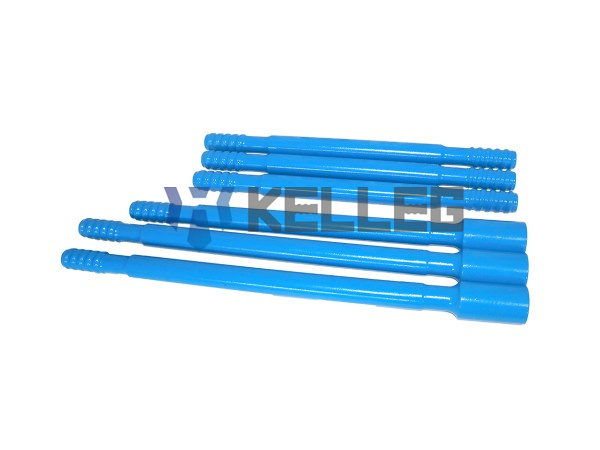2020 官网升级中!现在您访问官网的浏览器设备分辨率宽度低于1280px请使用高分辨率宽度访问。
Hexagonal drill rods are hollow steel raw materials used to make drill rods for small and medium-sized rock drills, mainly in H22 and H25 specifications. At the beginning of development, as the drill rod was a tool used to break rocks directly, only high-carbon steel hardened to high hardness could be used to break rocks. In the 1940s, cemented carbide was invented to produce rock drill bits, which could break rocks more effectively. In this way, the function of the drill rod changed from breaking rock to transmitting impact energy. The transmission of high frequency and high-stress impact energy requires the drill rod to have dense quality and sufficient rigidity and toughness. So, What are the basic requirements of steel grades for hexagonal drill rods?

1. The hexagonal drill rod is a hollow slender rod, most of which are manufactured with hot rolled material. It is necessary to ensure that the hot-rolled surface has high fatigue strength and the slender rod has high bending fatigue strength.
2. Hexagonal drill rods are used for wet rock drilling. To ensure the cavitation resistance of the inner hole of the wet rock drilling rods, high fatigue strength, work-hardening index, purity, and fine grain are required.
3. To ensure that the hexagonal drill rod has a low crack extension rate during the crack extension period, the microstructure of low carbon martensite and residual austenite or low carbon bainite and residual austenite is required.
4. To ensure that the tail end of the hexagonal drill rod can withstand the high-frequency impact of the rock drill piston during rock drilling, without the occurrence of pile top and top explosion, the hardness of the drill tail end should reach HRC50~53 after heat treatment.
5. The material should avoid or reduce the phenomenon of severe decarburization and grain coarsening as much as possible during the steel rolling and brazing heating. Severe decarburization and grain coarsening are other important reasons for reducing the life of the hexagonal drill rod.
The working conditions of hexagonal drill rods are very harsh, and the factors affecting the quality, service life, and stability of drill rods are various, so the steel grades can be analyzed in conjunction with the basic requirements of steel grades for hexagonal drill rods and selected to lay the foundation for effective improvement of drill rod service life and stability.